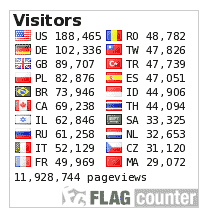Author Guidlines
Author Guideline
J-SHMIC : Journal of English for Academic
1. Title
Use 15-point type for the title, aligned to the center, linespace exactly at 17-point with a bold font style and initial letters capitalized. No formulas or special characters of any form or language are allowed in the title. Words like “isâ€, “orâ€, “thenâ€, etc. should not be capitalized unless they are the first word of the title.
2. Authors and Affiliations
Author(s) name(s) should be aligned to the center with linespace exactly at 13-point. The text must be set to 11-point. There should be a spacing before of 24-point.
Affiliation(s) should appear aligned to the center including organisation, address and e-mail. The linespace must be of exactly 11-point with 9-point of font size and the font style set to italic.
3. Abstract and Keyword
A concise and factual abstract is required. The abstract should state briefly the purpose of the research, the principal results, and major conclusions. The abstract should be 200-300 words. It should include objectives and rationale of the study, the method used, main findings and significance of findings. It should be accompanied by up to 5 Keywords. The abstract should be available in English and Bahasa.
3. Introduction
The purpose of an introduction is to justify the reasons for writing about your topic. Your goal in this section is to introduce the topic to the reader, provide an overview of previous research on the topic, and identify your own hypothesis, research, or study. If you introduce and define key words in your abstract, you need to introduce and define them in this section
4. Methods
This section explains the rationale for the application of specific procedures or techniques used to identify, select, and analyze information applied to understanding the research problem/project, thereby, allowing the readers to critically evaluate your project’s/study's overall validity and reliability.
5. Findings and Discussion
The discussion is written to interpret and describe the significance of your findings in light of what was already known about the issues being investigated, and to explain any new understanding or insights about the problem after you have taken the findings into consideration. It should connect to the introduction by way of the research questions or hypotheses you posed and the literature you reviewed, but it does not simply repeat or rearrange the introduction; this section should always explain how your study has moved the reader's understanding of the research problem forward from where you left them at the end of the introduction.
6. Conclusion
The conclusion is intended to help the readers understand why your research should matter to them after they have finished reading the paper. It is not just a summary of the main topics covered or a re-statement of your research problem, but a synthesis of key points and, if applicable, where you recommend new areas for future research.
7. References
Please ensure that every reference cited in the text is also present in the reference list (and vice versa). It is highly recommended to use Mandeley and APA system










